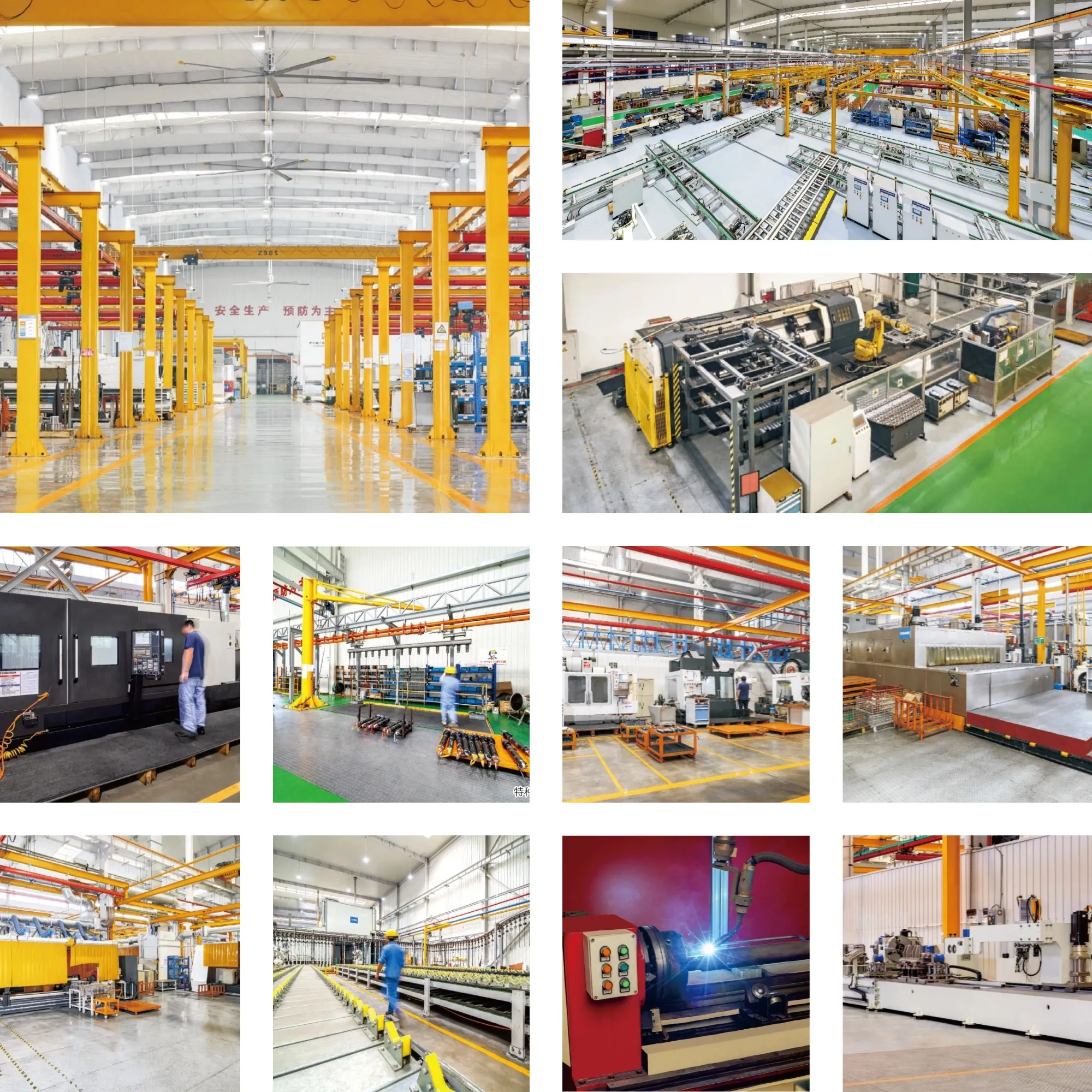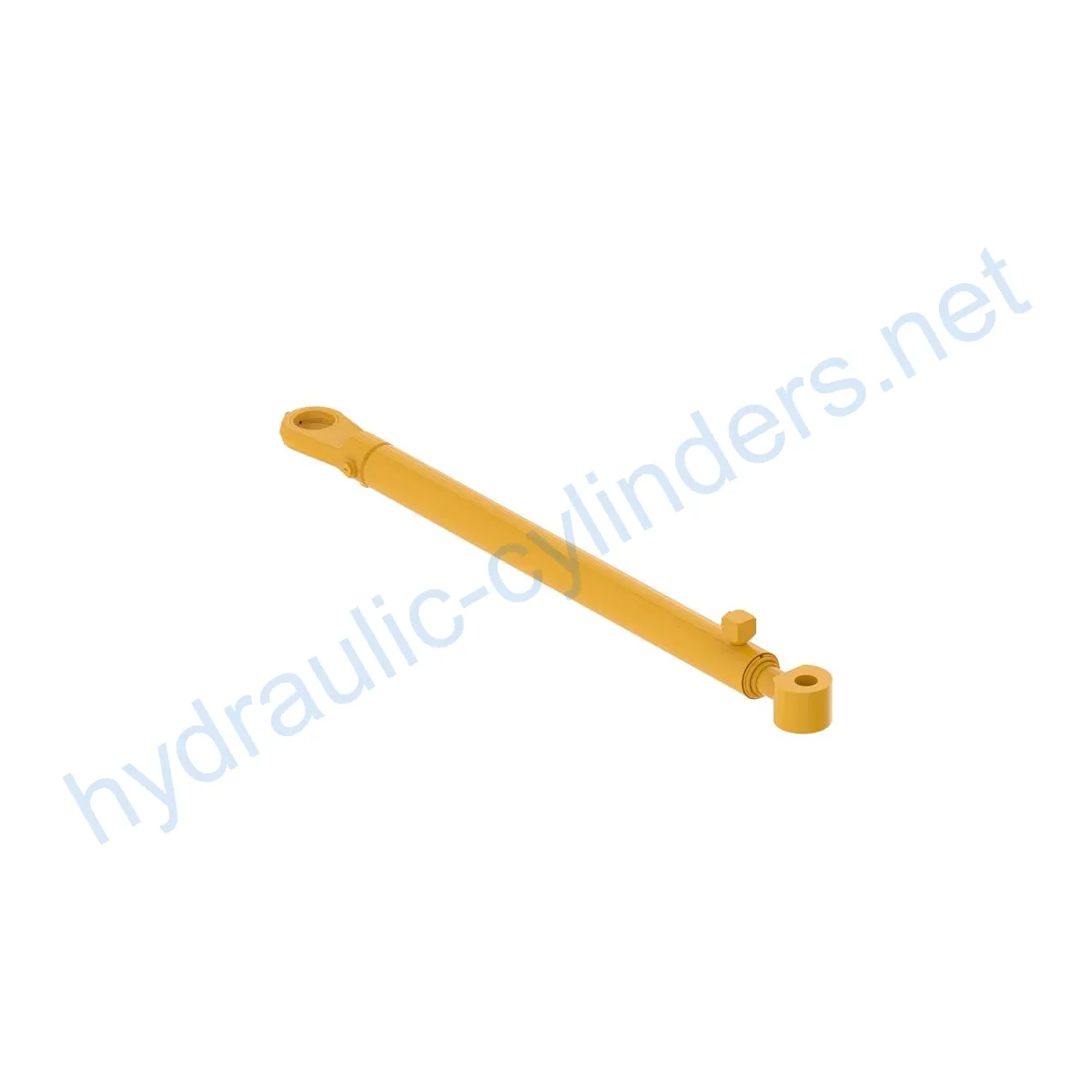Replacement Of AH218240 Hydraulic Cylinder
Som en af producenterne, leverandørerne og eksportørerne af mekaniske produkter tilbyder vi hydrauliske cylindre og mange andre produkter.
Kontakt os for yderligere oplysninger.
Mail:sales@hydraulic-cylinders.net
Producent, leverandør og eksportør af hydrauliske cylindre.
Replacement Of AH218240 Hydraulic Cylinder
The Replacement Of AH218240 Hydraulic Cylinder is an essential component in various heavy-duty machines and vehicles. It is responsible for converting the pressure of hydraulic fluid into force and linear motion, enabling the smooth operation of hydraulic systems. This replacement hydraulic cylinder is designed to replace the original hydraulic cylinder model AH218240, and it is compatible with the 317 and 320 machine models.
Specifications and Compatibility
The Replacement Of AH218240 Hydraulic Cylinder has a weight of 43.33 lb, a height of 3.25 in, a width of 4 in, and a length of 43.25 in. It is compatible with the 317 and 320 machine models, making it a versatile replacement option for a wide range of hydraulic systems.
Features
Improved Equipment Performance
Replacing damaged or worn hydraulic cylinders can restore the normal operation of equipment and ensure its performance in various applications.
Enhanced Safety
Regularly replacing hydraulic cylinders can reduce safety hazards caused by cylinder failures, ensuring the safety of both operators and equipment.
Overload Protection
New cylinder designs usually consider better overload protection mechanisms, improving safety.
Quick Installation
Modern hydraulic cylinders are designed to be easy to install and replace, reducing downtime.
Standardized Components
Many hydraulic cylinders are standardized products, making it easier to obtain replacement parts in the market.
Our company is capable of producing this product, and we can provide a perfect replacement for these hydraulic cylinders.
Applications
The Replacement Of AH218240 Hydraulic Cylinder can be used in various heavy-duty machines such as excavators, cranes, tractors, harvesters, automated production lines, casting machines, mining equipment, and bulldozers. Here are some examples:
Excavators
In excavator arms or buckets, hydraulic cylinders may be damaged due to long-term use or overload and need to be replaced to restore normal operation.
Cranes
Crane boom hydraulic cylinders are prone to wear and tear during frequent lifting and lowering, and require regular replacement to ensure safety.
Tractors
The hydraulic cylinder of the front loader on a tractor may leak or perform poorly during continuous lifting and tilting operations, requiring replacement.
Harvesters
During the harvesting process, the hydraulic system is under high pressure, and cylinders may be damaged due to fatigue, requiring timely replacement to maintain work efficiency.
Automated Production Lines
Hydraulic cylinders are used to control robotic arms and other automated equipment. Cylinder malfunctions can affect production efficiency and require immediate replacement.
Casting Machines
Under high-pressure and high-temperature environments, hydraulic cylinders may experience performance degradation. Regular replacement ensures product quality.
Mining Equipment
Hydraulic cylinders are used in mining equipment to lift and move heavy objects. Due to the harsh working environment, regular inspection and replacement are required to avoid equipment failures.
Bulldozers
The wear of hydraulic cylinders on bulldozer pushing arms can lead to a decrease in pushing ability and require timely replacement to maintain work efficiency.
Maintenance
Regular maintenance and inspection of hydraulic cylinders are essential to ensure their longevity and efficiency. Here are three common maintenance tasks:
Regular Inspection
Hydraulic cylinders should be inspected regularly for signs of wear and tear, corrosion, leaks, and other damages.
Proper Lubrication
Cylinders should be properly lubricated with the appropriate hydraulic oil to prevent wear and tear and provide smooth operation.
Seal Replacement and Calibration Check
Seals should be replaced when necessary, and calibration checks should be performed to ensure the accuracy and efficiency of the cylinder’s operation.
During installation, it is essential to provide proper guidance on aligning the cylinder and recommend using appropriate installation brackets to secure the cylinder. We also offer recommended inspection, repair, and replacement procedures, part replacement, and rebuilding services to enhance the cylinder’s lifespan.
Safety and Environmental Considerations
Hydraulic cylinders can pose a danger to operators and the environment. Therefore, proper safety measures should be taken when installing, maintaining, and operating them. Regular inspection and maintenance also help prevent accidents and protect the environment.
Troubleshooting and Common Problems
Hydraulic cylinders may encounter various problems, such as leaks, damaged seals, and incorrect alignment. Here are some common issues:
Leakage
Cylinder leakage may occur due to worn cylinder seals, damaged piston rods, or improper cylinder installation. Leakage can lead to reduced efficiency and equipment failure.
Seal Damage
Seal damage can be caused by various factors, such as environmental factors, improper handling, and wear and tear. Damaged seals can cause leaks, leading to reduced efficiency and safety hazards.
Incorrect Alignment
Incorrect alignment during the installation of hydraulic cylinders can cause damage to the cylinder, leading to inefficiency and safety hazards.
It is essential to diagnose and solve these problems promptly. We provide troubleshooting tips and solutions to help readers diagnose and solve problems effectively. We also suggest preventive measures to minimize potential problems.

Design Considerations and Selection Criteria
The design of hydraulic cylinders should consider various factors, such as load-bearing capacity, sealing, durability, safety, and maintainability. Here are some design considerations:
Load-Bearing Capacity
The cylinder’s load-bearing capacity should be in line with the machine’s needs to ensure efficient operation.
Sealing
The use of high-quality seals, such as polyurethane and nitrile rubber, can improve the cylinder’s wear resistance and reduce leakage.
Durability
The use of high-quality materials and precise processing can improve the cylinder’s durability and reduce wear and tear.
Safety
The cylinder’s design should consider safety factors such as overload protection and proper installation procedures.
Maintainability
The cylinder’s design should consider ease of maintenance and repair, such as easy disassembly and replacement of parts.
The Replacement Of AH218240 Hydraulic Cylinder incorporates these design considerations to ensure efficient and safe operation.
The seals and lubrication of hydraulic cylinders are critical for their performance and longevity. The use of proper seals, such as piston seals and rod seals, made of wear-resistant materials, can prevent leaks and reduce wear. Proper lubrication with suitable hydraulic oil can also ensure smooth operation and reduce wear and tear. We offer regular inspection and preventive maintenance measures to enhance the hydraulic cylinder’s performance and lifespan.
Our company specializes in producing replacement hydraulic cylinders, providing customized services, international certifications, advanced production equipment, and professional after-sales services. We are a leading manufacturer and wholesale distributor of hydraulic cylinders in domestic and international markets.

Author: lyl
Take a Tour of Our VR Factory:
Take a tour of our VR factory with the following
Hydraulic Cylinder Application:


